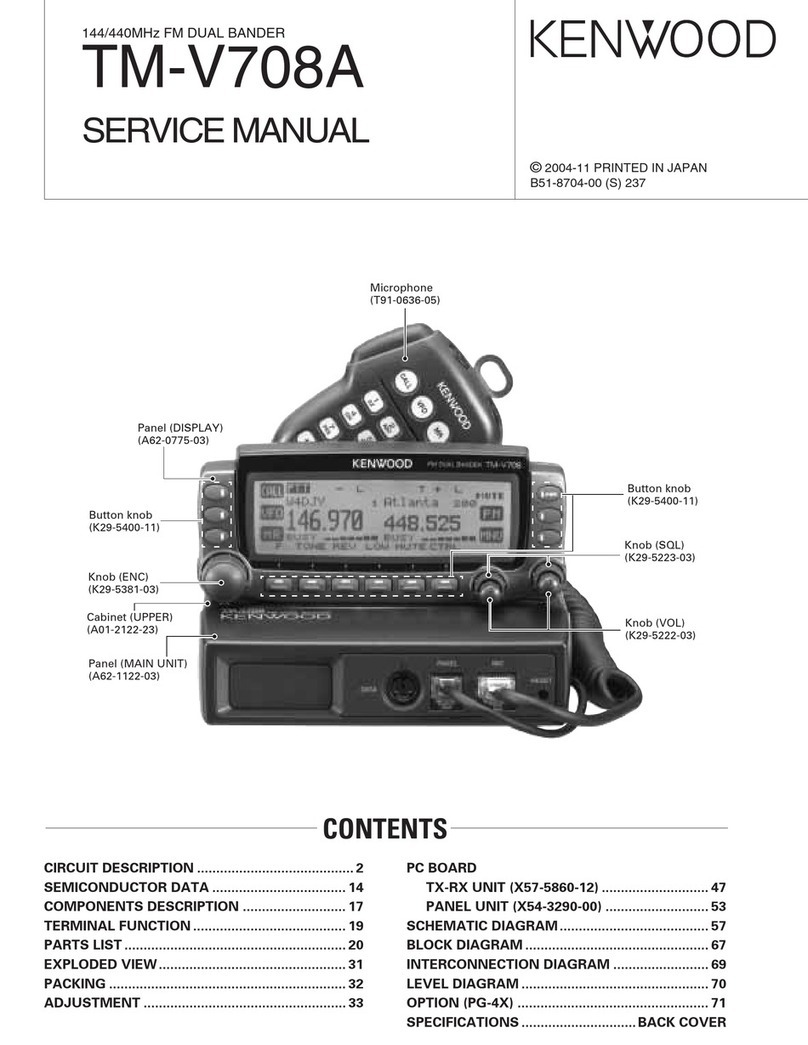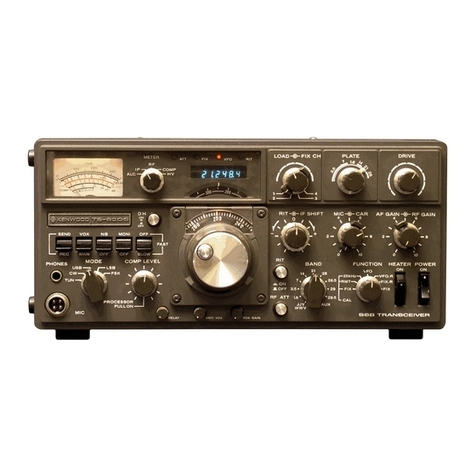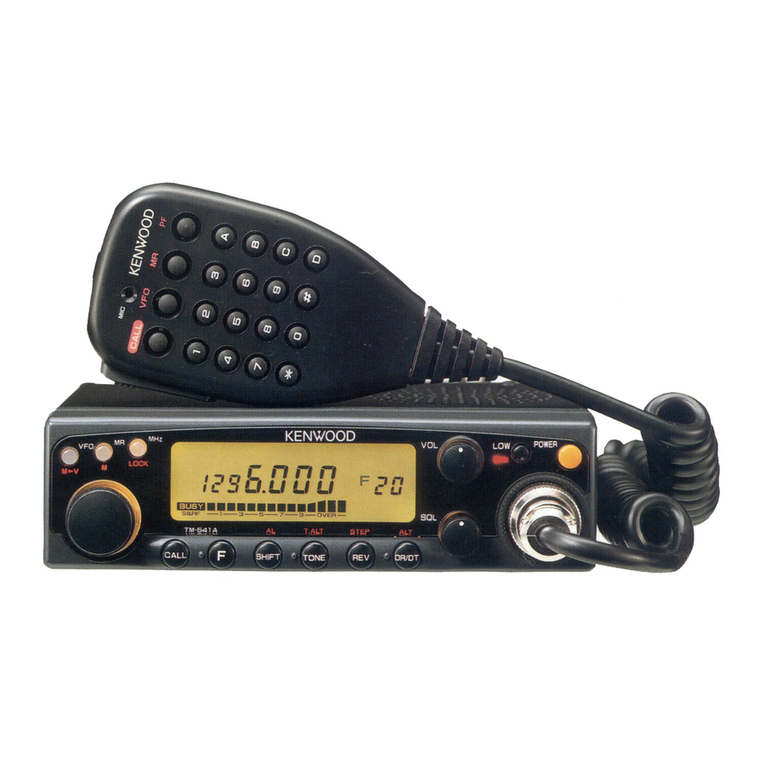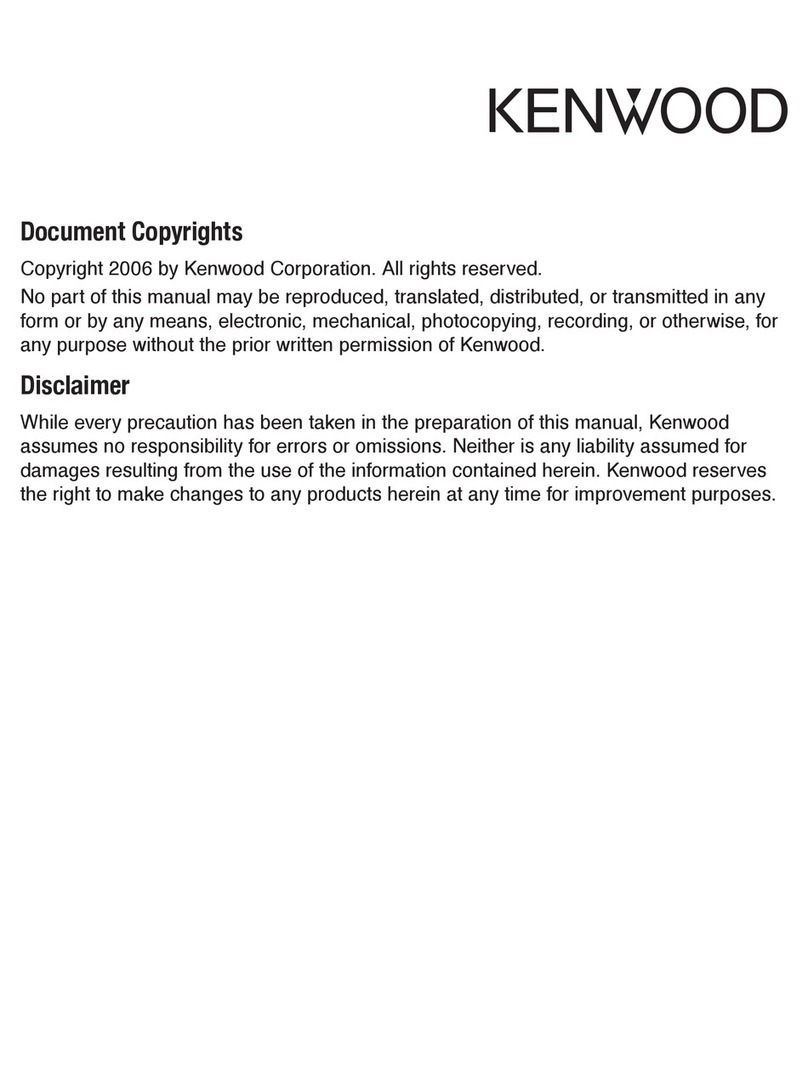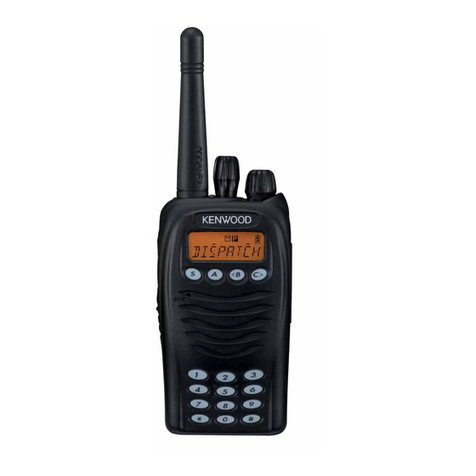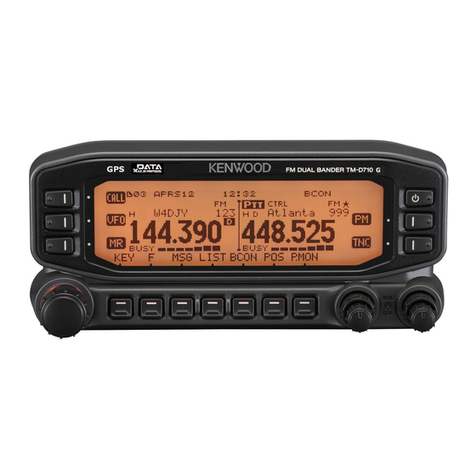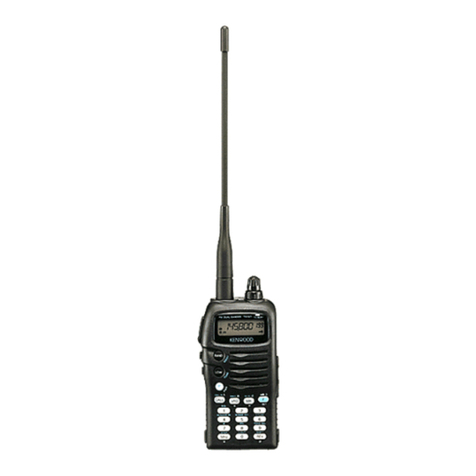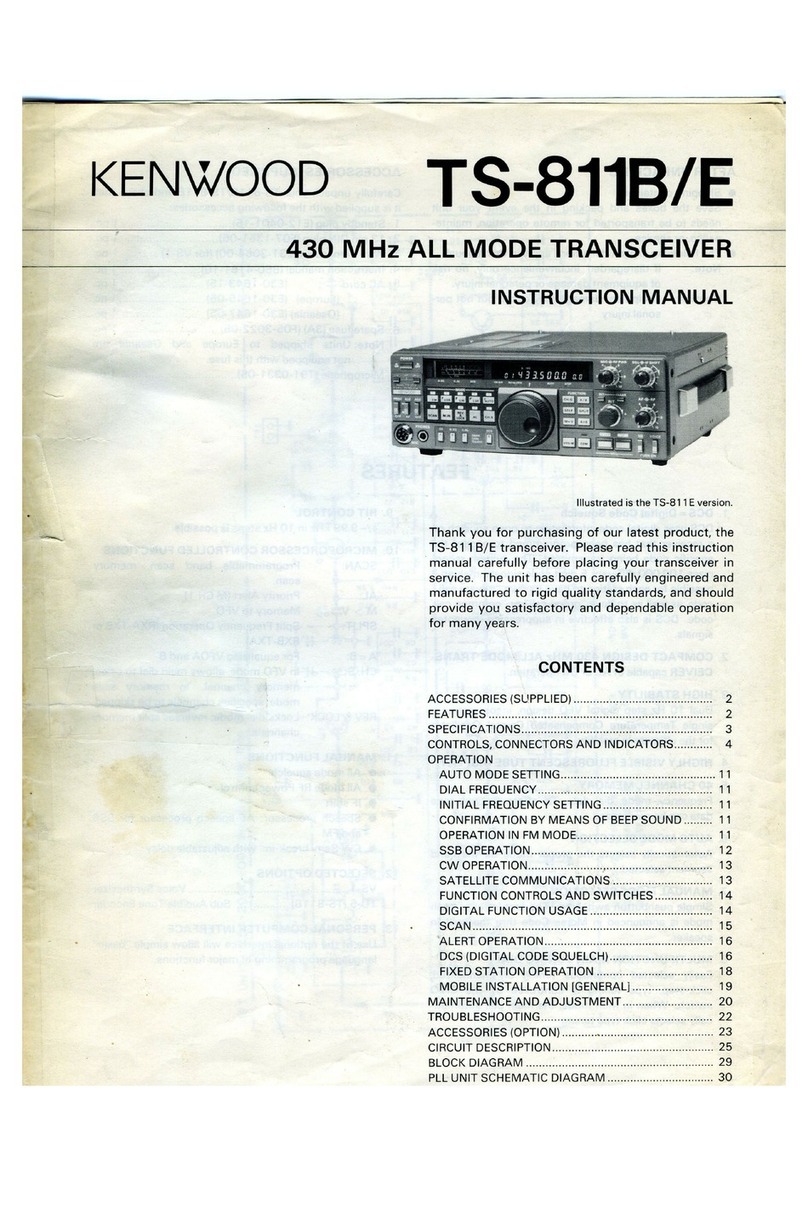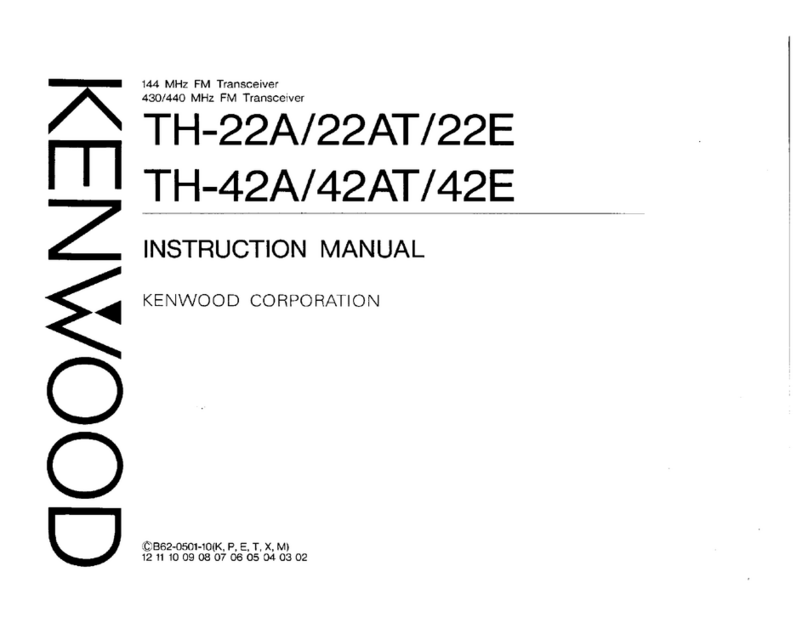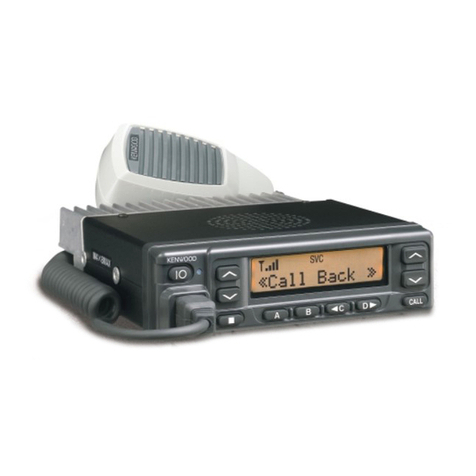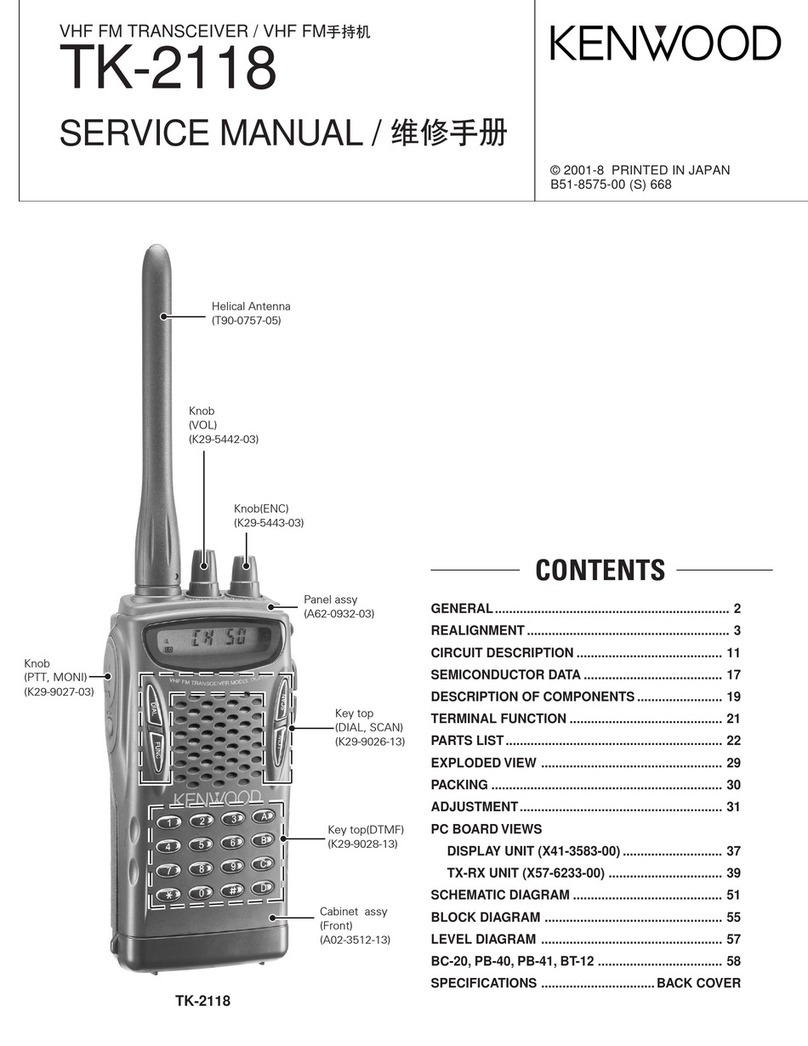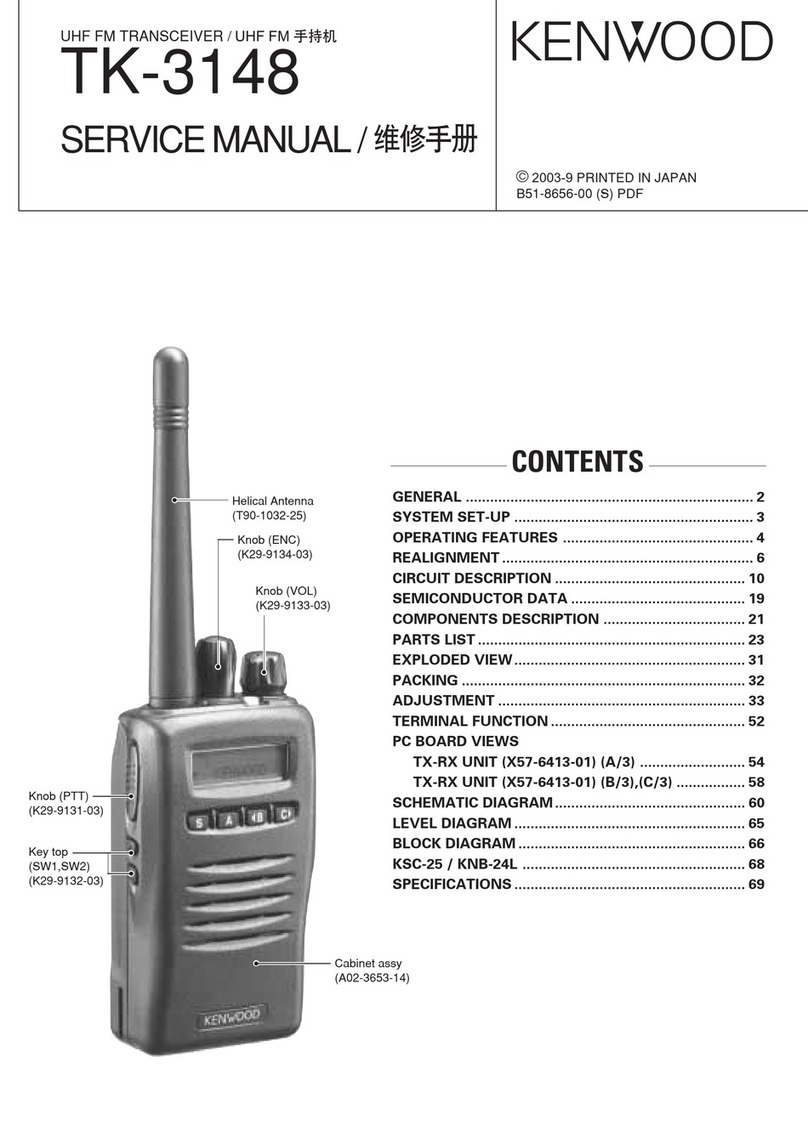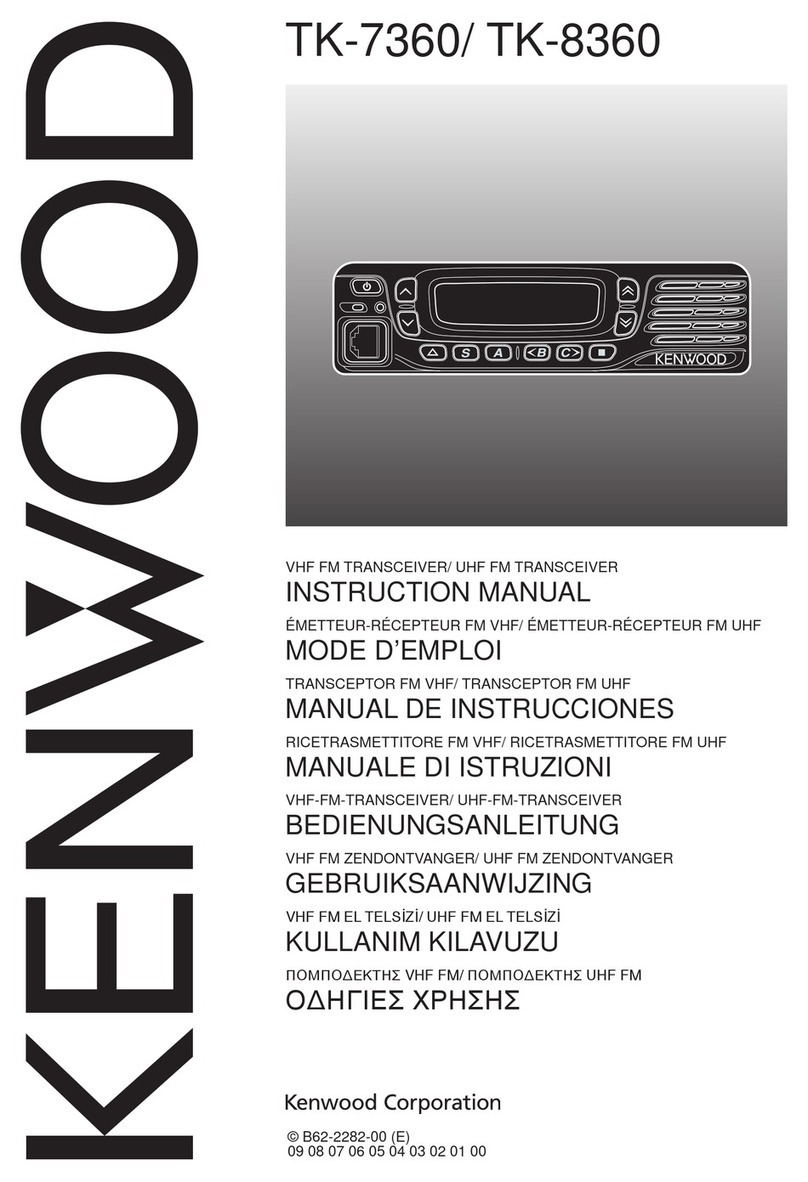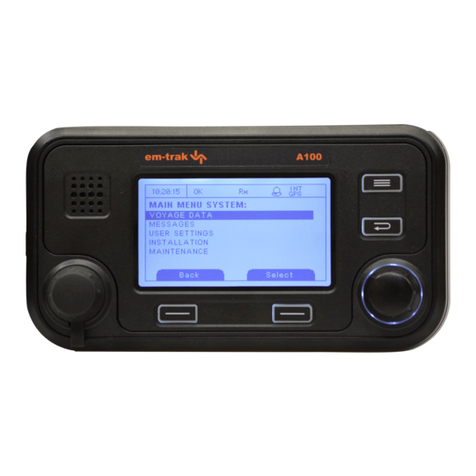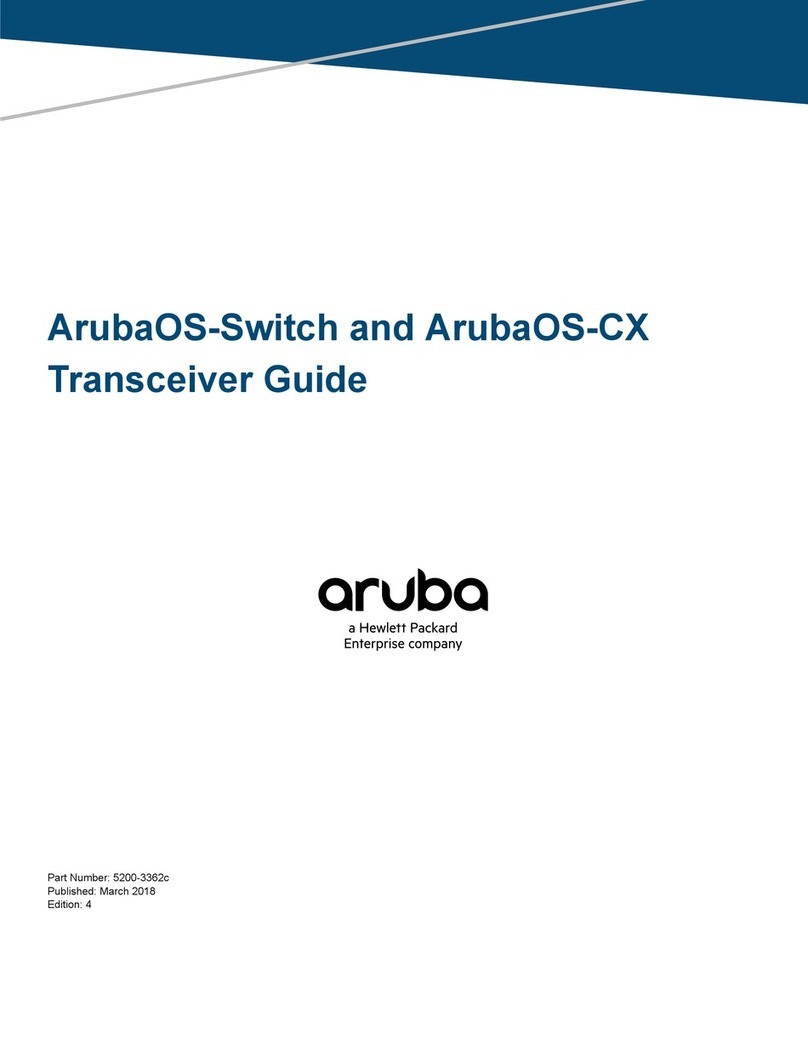
CIRCUIT DESCRIPTIONS
input pulse and it is reset. The operating frequency has
been improved because resetting and presetting are done
in one cycle of input pulse but not in half a cycle, and the
delay time, t2, of the high speed D-flip-flop in lClO is
much smaller than the delay time, tl, from IC5,
6
and
7 and logic circuit to point A.
Next, operation is explained in relation to the TX off-
set switch setting.
1
+600
During reception, this is the same as in (2). During
transmission, SR 1 is turned on and becomes U in Table 2.
Gate U therefore opens and gates No and D are closed.
At this setting, Ns
=
IN
+
197 (137
+
60),and it operates
as an extender when IC5, IC6 and IC7 take code
8,
0 and
5 respectively, to perform division of N
+
197.
2
No
(SIMP)
(F)and (G) make up No in Table 2. Gates Noand U
open and gate D
IS
closed. At this setting, the relation,
Ns
=
N
+
137, holds between preset value N and actual divi-
sion ratio Ns. It is enoughto decrement the counter after
division of N (decrernenting) has completed and perform
resetting and presetting just when the count has become
137. For this purpose, IC5, IC6 and IC7 do not take code
8,
6 and 3 respectively (as already described), but it
operates as an extender at code 5 and performs division
of N
+
137. Since the gate is of code 197 (137
+
60),the
extender operates before this code triggers the circuitry.
3
-600
During reception, SR2 is turned on as in (2). During
transmission, gates No, U and D open as D in Table
2.
At this setting, Ns
=
N
+
77 (137
-
60), it operates as an
extender to perform division of N
+
77 when IC5, IC6 and
IC7 carry code 9,
2
and 5 respectively. At this time, the
extender operates at code 77 even when all gates are open
Table 1 shows the case of
N
=
400 (144.00 MHz).
-
TSBl
Active
filter
n
TONE SQUELCH CIRCUIT
*d
Fig. 5 shows the circuit. The tone squelch circuit
employed in this equipment is the so-called CTCSS (con-
tinc~oc~stone controlled squelch system). Tone signal of a
certain frequency
is
superimposed with audio signal at the
trans~rlissionside, which is separated at the reception side
to drive the squelch circuit. When set toSOU (tonesquelch)
as shown in Fig. 5, a voltage is applied toTSBI and TSB2.
When no signal is received or signal received does not have
tone component, 020 and 21 remain off and no sound is
reproduced since the voltage of TSB2 is applied to the
base of Q13 through Dl4and the AF circuit is turned off.
When signal including tone component is received, the tone
signal separated from discriminator output with 019,
LPF
and amplifier, is applied toan active filter. The active filter
which serves to the tone frequency and 011 give steep
characteristics at the frequency. It selects tone output
equal to the active filter and its output passes through Dl1
(on during reception) and is detected in Dl2 and 13. It
turns on 020and then 021 and turns off Q13 and the AF
circuit (014) operates to reproduce sound from speaker.
In the AF circuit, an active type high-pass filter of 024
and 25 cuts off tone signal output to arnplify audio signal
alone. During transmission, 022 is turned on, and the
active filter and 011 forin an oscillating circuit to deliver
output with the same frequency as of the active filter.
This oc~tpc~tis passed through VR3 and modulated in
TX
unit together with audiosignal. The maximum frequency
deviation for audio signal is f5 kHz and that for tone com-
ponent for tone squelch is k0.5 kHz, which results in a
ratio of about -20 dB. This would result in buzzing sound
when unmodulated signal is received, but a high-pass filter
of 300 Hz in cutoff frequency corporated in the equipment
reduces the tone level to prevent buzz. Operation is the
same even in the SUB (sub-audible)since avoltage is applied
to TSBI, and sub-audible control is performed.
I
I
2
13
H8D5022
I
I
Dlsc
L
---A
Output
e
L.P.F.
AMP
To
base
of
013
Fig.
5
TONE SQUELCH Circuit



